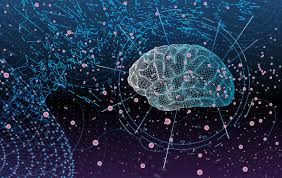Source: analyticsinsight.net
analyticsinsight.net
Artificial Intelligence has been gaining ground as an essential field of research that could revolutionize the world since the first computer revolution in the 1980s. The technology has seen several roller-coasters in its journey, and today, it has come out with many promises to society, accelerated by vast advances in computing capacity.
Besides the private sector, AI has now entered into federal agencies, even in a few places, it is creating massive impacts. Still, many things have to be done right now as the technology in its initial experimental phase.
At ATARC’s Federal Artificial Intelligence And Data Analytics Summit, Director of artificial intelligence at the Department of Veterans Affairs (VA), Gil Alterovitz said, federal data analytics and automation efforts are still getting organized around a larger new paradigm. Though, the VA is experimenting with a number of AI-driven projects to assist patients, including programs to lessen waiting times at its facilities, foresee potential suicides and monitor customer service, as reports noted.
To advancing the government initiatives, automation lead at the National Geospatial-Intelligence Agency Todd Myers recommends that the government should look to companies like Uber and Amazon for models of how to use data to advance their missions. He said, “These companies are successful, and the government will be successful when we break down the organizational silos of units that may be working on their own data analytics and data sets.”
Agencies are also starting to think about how to more broadly organize, codify and assess the data AI and machine learning generates.
Federal Move Towards AI
Last year, AI entered the federal agencies’ collective consciousness, and government, this year, starts seriously considering where and how this technology can assist. In an effort towards it, earlier this year, President Donald Trump signed an executive order calling on the government to invest in, support and expedite the use of AI initiatives in federal applications.
Also, the White House’s fiscal 2020 budget proposals demonstrated the federal government move towards the tech, with planning to allocate some US$4.9 billion into unclassified AI and machine learning research. Then just a week after, the administration introduced AI.gov to be the hub of all the AI projects being done across the agencies.
However, in defense, the Defense Advanced Research Projects Agency’s (DARPA) use and development of AI should be very distinct from another agency’s use of AI on a continuum of machine learning.
Some experts suggest agencies must clearly identify how they define AI and what types of AI are appropriate for their various mission objectives before leveraging it. The most useful AI is not only what researchers call artificial general intelligence, but that is AI which will be designed to think and reason for itself.
Now, as policies for AI initiative has featured in budgets and strategic documents across the public sector, it seems as a mission-critical priority for the government.
